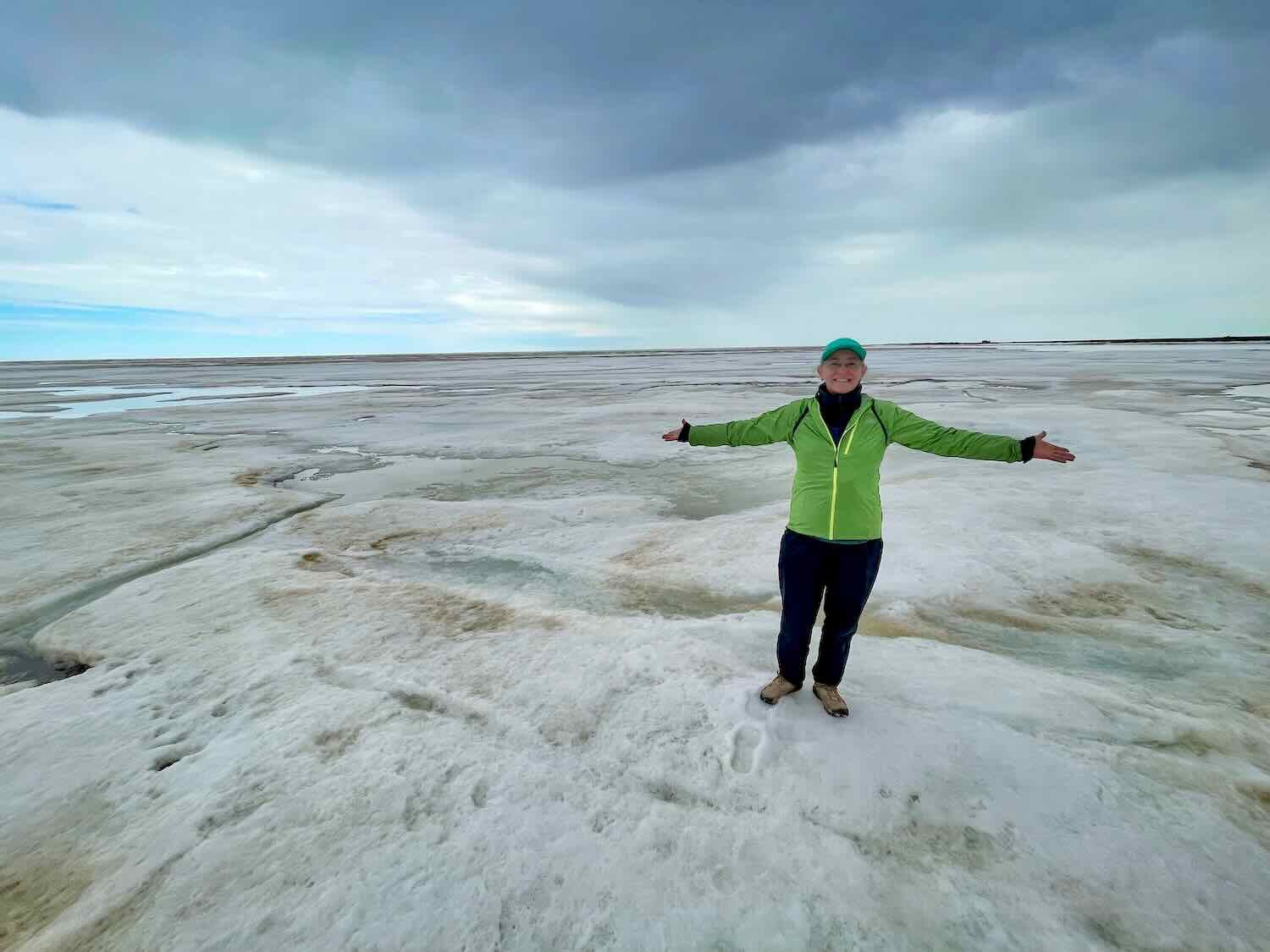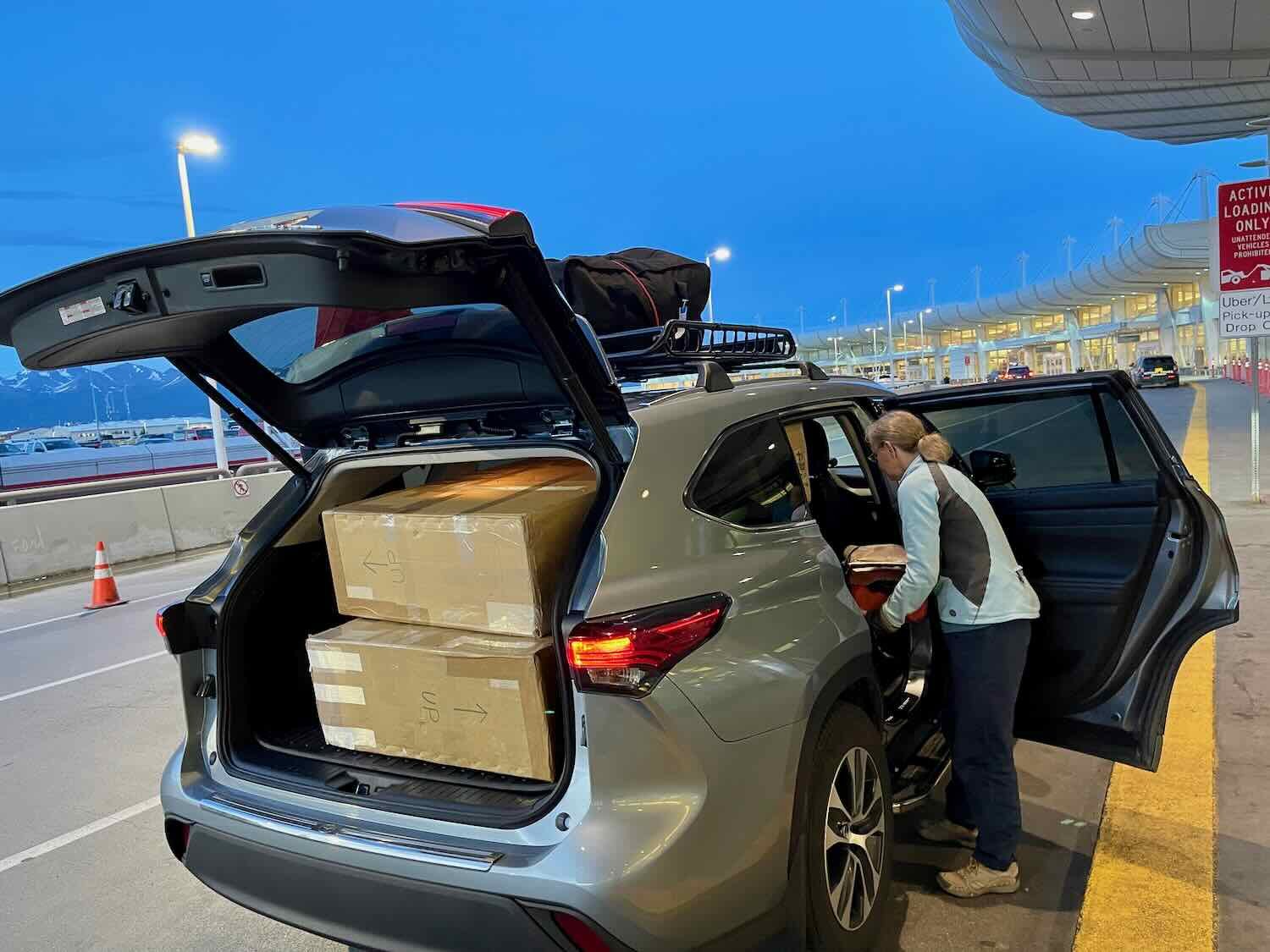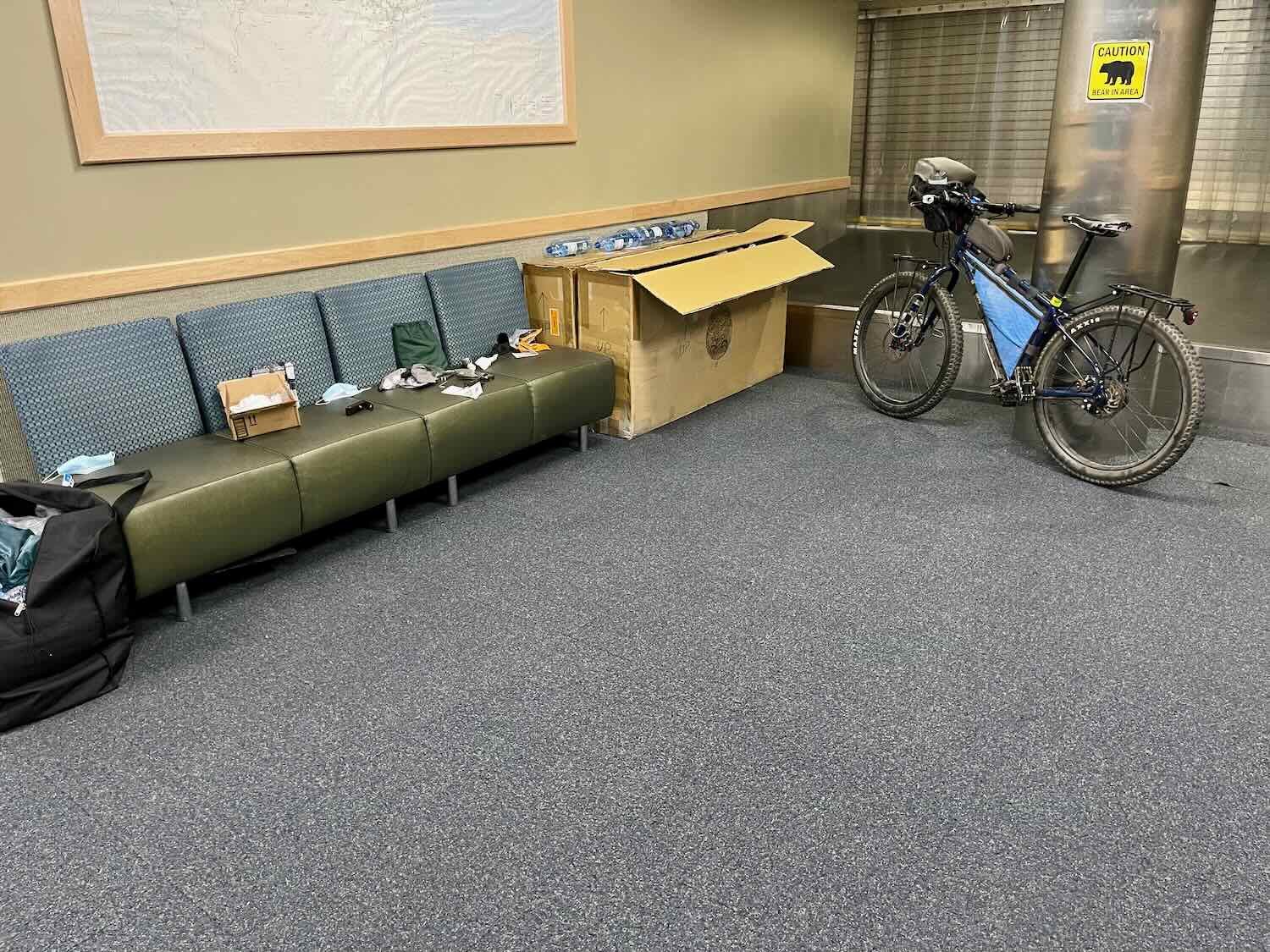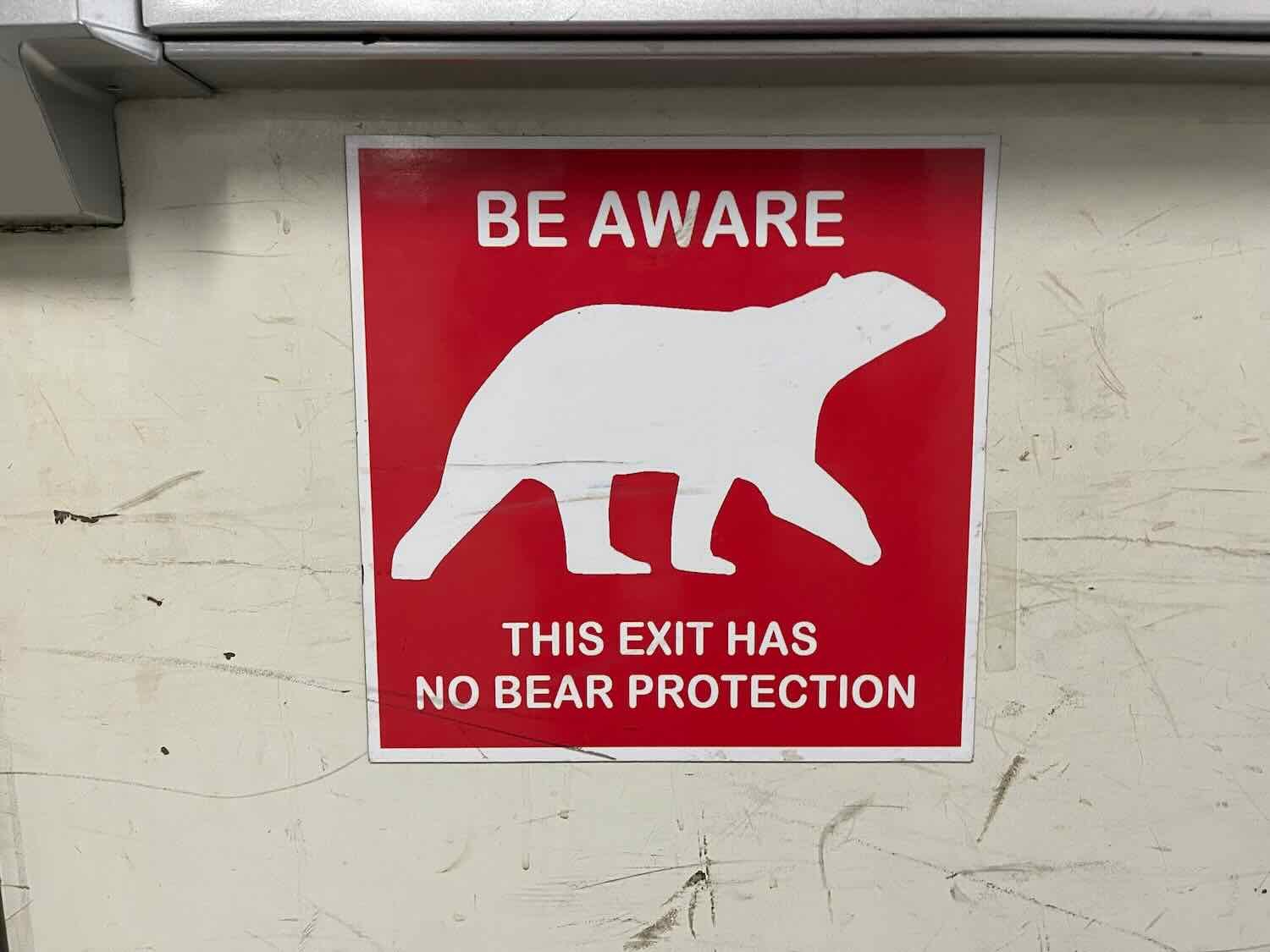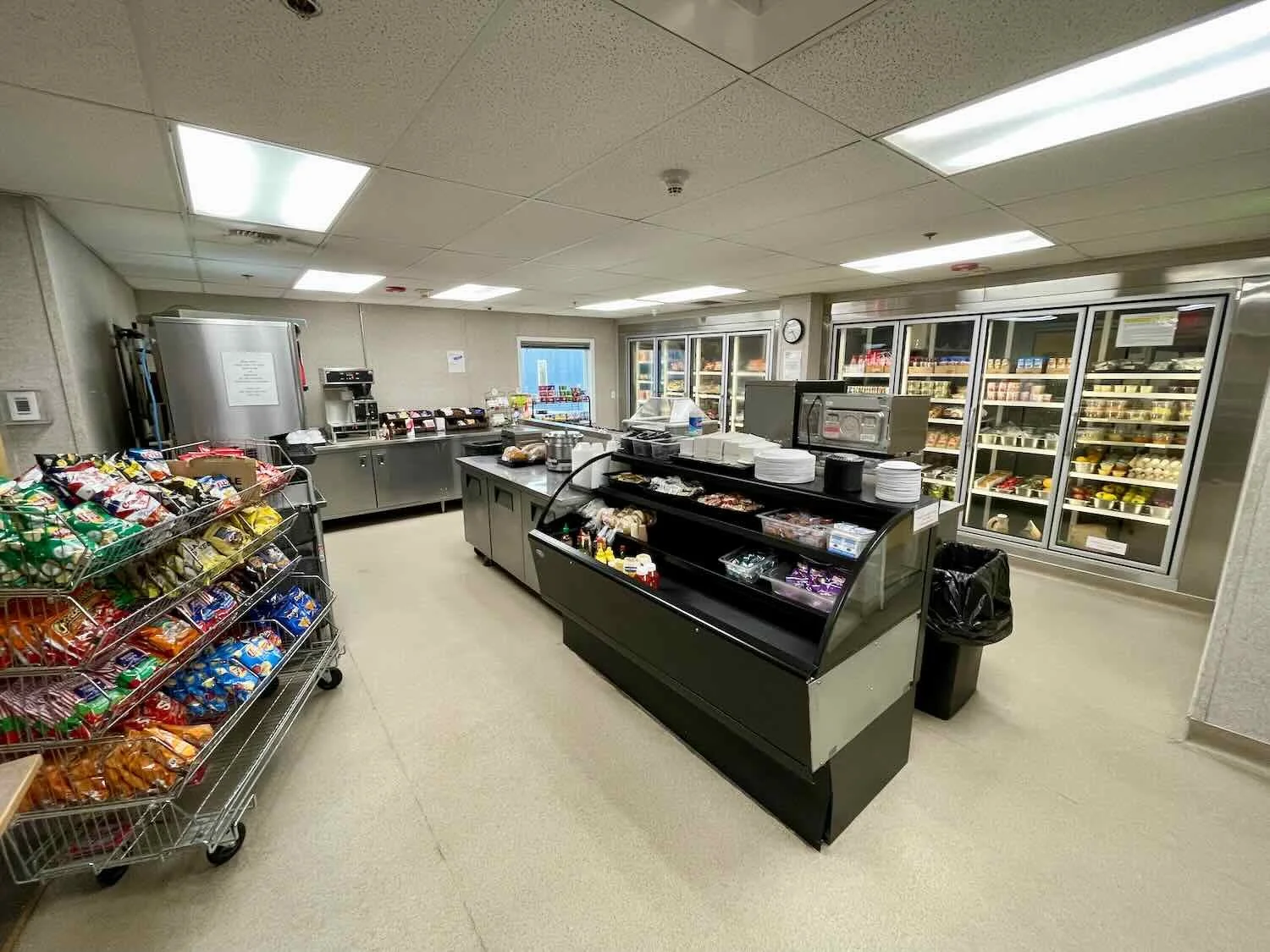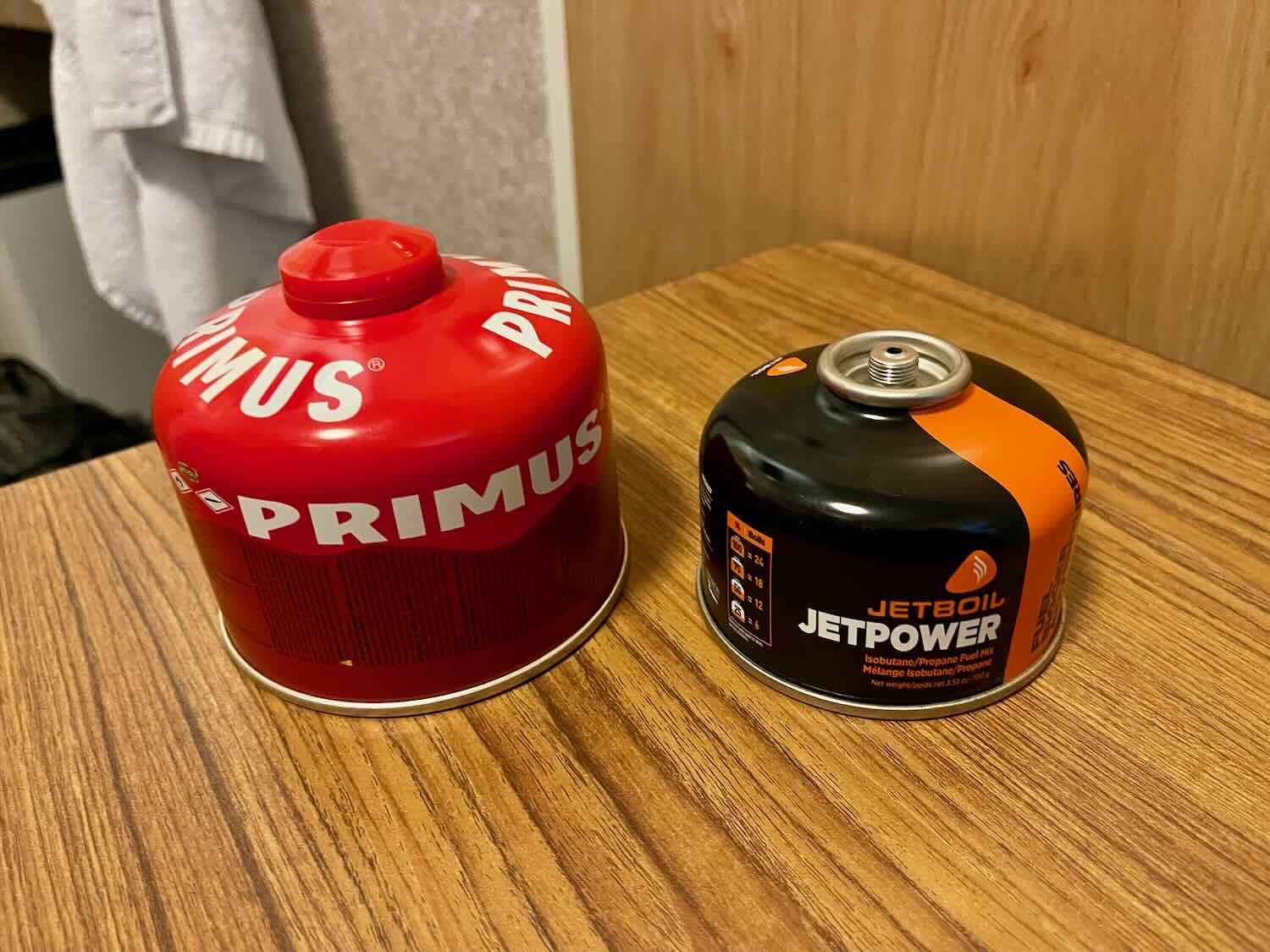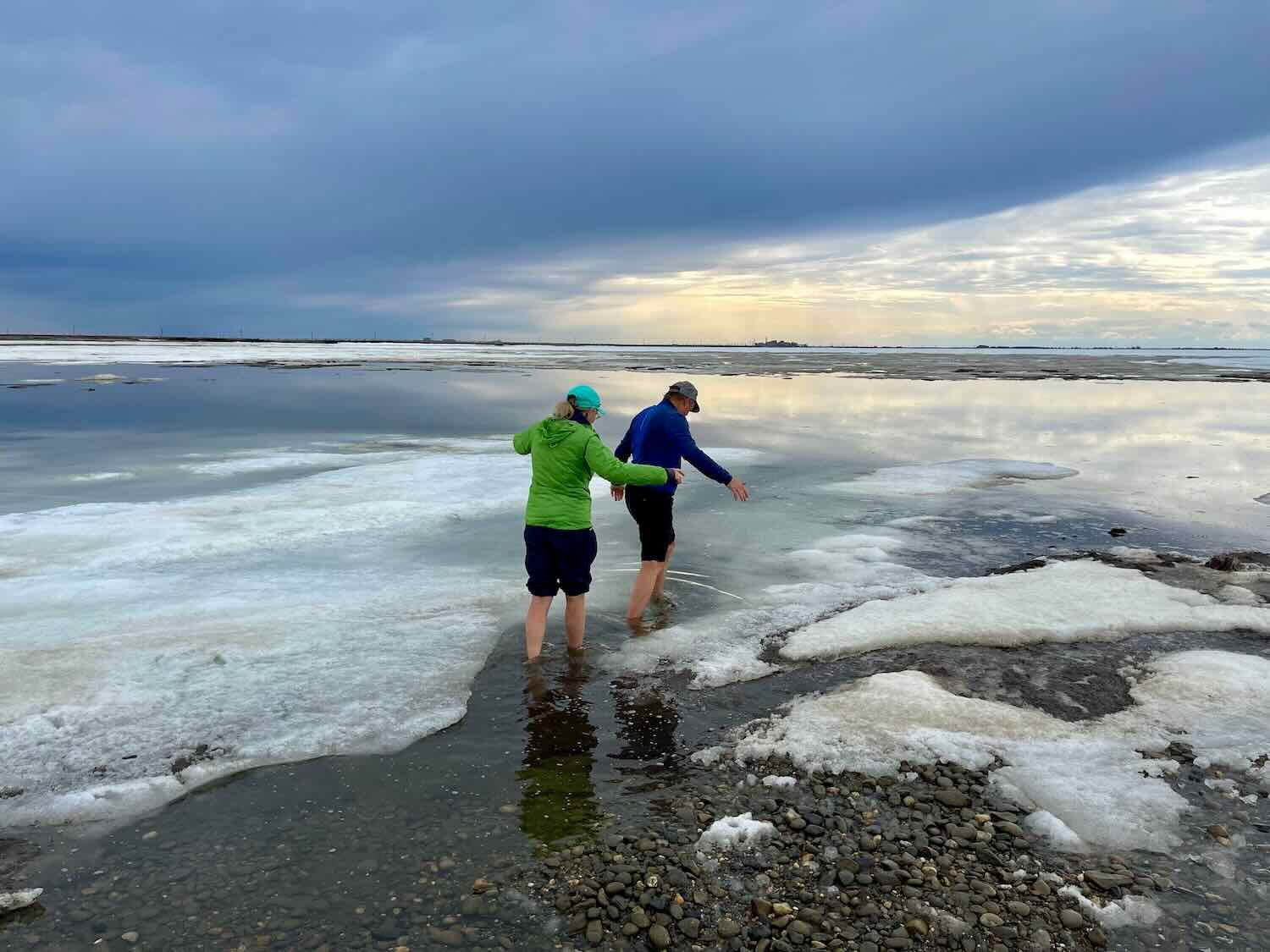Deadhorse, Alaska: Where Land Ends in the North
20-21 June 2022
20 June - Arrival in Deadhorse
21 June - Wading into the Arctic Ocean and prep for the big ride
Just Getting There is an Adventure
People who go on “normal” vacations could be forgiven for not appreciating the many additional sources of stress that come from traveling with bicycles. It’s bad enough trying to remember everything you need, getting your belongings safely packed, and getting to the airport on time even when you only have just your clothes and toiletries to worry about.
But taking your bicycle along for the ride ratchets up the complexity. Problems can arise from any of the following:
Procuring the right sized box for your type of bike
Packing the bike carefully enough that it arrives without any broken components - even after handling by airline staff
Finding a ride to the airport that can accommodate the number of bikes in large boxes that are going with you (in our case, two). It is worth noting that our bikes take the largest boxes available, making transport even more challenging. They often do not fit in vehicles that can accommodate other, smaller bike boxes.
Getting the bikes checked in without incurring unexpected charges (oversized… overweight…, etc.)
If you plan to cycle away from your destination airport, then also finding a spot inside the terminal where you can assemble your bike without inspiring the wrath of airport staff.
And finally, having all the right tools with you to re-assemble your bike in a quiet corner of the airport
Fortunately, the boxes that we used to ship our bicycles to Anchorage survived the trip intact. So we were able to use them again for the final flight from Anchorage to Deadhorse, Alaska. Even better, it had been only six weeks since we had last packed them. So we had a good idea of how to get the bikes to fit, and we were more efficient than usual in boxing them for the next leg of travel. And there was plenty of space in the living room of our Anchorage apartment for all the maneuvers required.
We were lucky our apartment in Anchorage had plenty of room for disassembling, and packing our bikes for travel. Alaska, USA. Copyright © 2019-2022 Pedals and Puffins.
With the bicycles securely packed, our next hurdle was getting to the airport. To make matters a bit more interesting, our flight to Deadhorse would depart Anchorage at 5:45am. Even though it never gets fully dark at this time of year in Anchorage, it’s still not that easy to hail a taxi at 3:00 in the morning on a Sunday.
To ensure that we had plenty of time to adjust our plans if anything went wrong, we decided to schedule a taxi pick-up at 11:45pm the night before our flight. If all went well, we would sleep in the airport.
When scheduling the taxi, we specifically requested a mini van with seats that would fold down. But the taxi that arrived was a small Toyota. And although the seats folded forward, they did not fold into the floor of the vehicle. One look at our boxes, and the taxi driver declared that they would not fit in his van. Plan A had failed. On to Plan B.
The taxi driver helped us get in touch with the company’s dispatcher, and suggested that we should request a taxi equipped to handle wheelchairs. But the dispatcher was not eager to be helpful, and basically told us it was unlikely she could get us another van, let alone a wheelchair-ready van at that time of the night on Sunday. We begged her to try, but she was, frankly, not encouraging. She said she’d call back if she could get us anything.
We waited a few minutes, as it gradually became clear we would probably not hear back from the dispatcher. It was now after midnight, and we both knew that Plan B was quickly unraveling. On to Plan C.
Our next idea was to call other cab companies since there were a number that served the airport. Well, after trying to reach 4 other cab companies without any of them answering the phone, we started to get concerned. We were running out of ideas.
Plan D was to try a Uber. They have a service called Uber XL. We’d never tried Uber XL with bikes before, partly because you never know what type of vehicle will arrive. According to the company’s app, a Uber XL is supposed to seat at least six people. That could mean a mini van or an SUV, which might not be big enough. If the Uber arrived and wasn’t big enough, we’d end up incurring a cancellation fee. But at this point, we were desperate and out of ideas. We decided that we had to give it a try.
So, we requested a Uber XL and amazingly, a driver responded who was less than 5 minutes away despite the late hour. But the app said that the vehicle was an SUV. PedalingGal hurriedly tried to call and text the driver, asking if the vehicle was big enough to handle two, big bike boxes. But there was no response. We crossed our fingers and waited.
When the driver pulled up, we saw a look of mild dismay on his face. But before he could tell us the boxes were too big, PedalingGuy sprang into action. He offered to help lower the back seats and load the boxes on their sides (not ideal for bicycles, but you do what you’ve gotta do at some point). The boxes took up almost the entire back space of the vehicle, and it became clear that not all of our bags would fit inside. PedalingGuy’s particularly large duffel was going to be a problem. But by this time our driver had embraced the craziness of our situation, and wanted to help us get to the airport. He tossed PedalingGuy’s duffel onto the roof rack of his SUV, and secured it with bungee cords. Then, bless his heart, he let PedalingGal sit on PedalingGuy’s lap in the front seat. By 12:20am we were on the road, and by 12:40am we had arrived at the airport all in one piece. It was a minor miracle. Our driver got a big tip. Plan D had worked… and it was a good thing, since there was no Plan E.
Once inside the airport we both let out a huge sigh of relief. Air Alaska wouldn’t let us check in until four hours before our flight’s departure, so we had about an hour to kill before we could check in. We entertained ourselves by posing for photos with the variety of stuffed animals on display throughout the airport terminal.
This moose kindly posed for a photo with PedalinGal at the Anchorage Airport. Alaska, USA. Copyright © 2019-2022 Pedals and Puffins.
When 1:45am finally rolled around, our check-in went smoothly. We headed to our departure gate and napped restlessly in the waiting area until boarding time.
We were thrilled when the flight boarded and took off from Anchorage on time. The city looked lovely in the early morning glow cast by the already-rising sun.
Bye-bye, Anchorage. The city looked lovely in the 6am, morning light. Alaska, USA. Copyright © 2019-2022 Pedals and Puffins.
It seemed like everything was going perfectly as the short, 1 hr and 40 minute flight was drawing to a close. We had crystal-clear skies as we spotted landmarks we would cycle past on our way south in a few days, like the iconic Brooks Range Mountains and the wide, meandering Sag River. From the air, you can even see the path of the Alaska Oil Pipeline and the Dalton Highway (our cycling route) as they parallel the Sag River across the North Slope tundra.
But as the airplane started its descent towards the northern coast, we noticed a stark line of clouds that suddenly shrouded our view of the ground. The Deadhorse Airport was somewhere under that mass of whiteness. And as the plane descended into the cloud bank, all visibility ceased. You couldn’t even see the tips of the wings on the airplane.
As we approached Deadhorse, an ominous bank of clouds appeared - laying low over the landscape along the northern Arctic Coast. Alaska, USA. Copyright © 2019-2022 Pedals and Puffins.
As the plane sank lower into the clouds and nothing became visible below, you could feel the tension starting to rise within the airplane. When you fly regularly, you have a sense of how long a descent should take. And the fact that nothing was visible for a long time seemed very ominous. We should have felt the wheels touch the ground by now. At some point, you start to hope that everything is going to be okay.
Then, almost to everyone’s relief (but also dismay), the airplane’s engines roared as the pilots aborted the landing and began the process of lifting the aircraft back into the sky. The pilots couldn’t see the ground and deemed it unsafe to land. We never saw the ground outside our window despite the fact that it must have been close underneath us.
It took a few minutes before the airplane had gained enough altitude to rise above the fog bank, and visibility was restored. During that time, a quiet anticipation settled over the passengers. We were all eager to hear something from the pilots. What would happen now?
When he finally spoke, the captain let us know that we would be heading for Fairbanks, Alaska to refuel. There, we would wait with the hope that the fog would clear, allowing us to make another attempted run to Deadhorse. It was not good news. There was no guarantee we would even make it back to Prudhoe Bay that day.
The delay in Fairbanks lasted for several hours, but we finally re-boarded our plane and made another attempt to fly to Deadhorse. It was still quite foggy, but in the last few hundred feet of the descent we broke through the clouds and were able to see the ground. What appeared was an eerie landscape sculpted into an endless mat of small, grass islands surrounded by channels of water. The channels are created by ice wedges that freeze and thaw on the surface of the permafrost, pushing the vegetation onto the mounds of dirt that form in between. And although it was June 20 - one of the longest days of the year and full-on summer in most of the northern hemisphere - the grasses of Prudhoe Bay’s tundra were still a wintery brown.
This is what we’ve been waiting for! Finally, a glimpse of the stark, northern arctic tundra. The polygons of grass are formed by ice wedges that pry the land apart. Deadhorse, Alaska, USA. Copyright © 2019-2022 Pedals and Puffins.
The plane landed with a few cheers and claps from passengers. We were nearly 5 hours behind schedule, but at least we had made it to our destination.
We were a bit worried that we would have enough time inside the airport to get our bikes put together, since small airports like Deadhorse often close after the last passengers depart (especially if there are no further flights that day). PedalingGuy located the Deadhorse Airport manager, and she confirmed that no more flights were scheduled to arrive that day. But she also assured us that the airport would remain open until 6:00pm, and said it would be fine for us to use the baggage claim room to build our bikes, once all the other passengers had left the area.
As soon as we could, we unpacked and started assembling our bikes. It took us about 3.5 hours to get our bikes rebuilt, and to pack our panniers with the contents of the duffle bags we had used for luggage. With the airport staff’s permission, we were able to leave the bike boxes behind as trash. We also donated the duffel bags to the airport for use by future travelers who might have need for extra capacity.
Not Your Typical Tourist Destination
Cycling the 3.5 miles to our accommodations at the Brooks Camp turned out to be tougher than expected. A combination of lack of sleep, mental exhaustion, and a very blustery headwind all conspired to slow us down. We followed Google maps which promptly took us into a dead-end restricted area.
After taking a look at a map and adjusting our route based on old-fashioned map reading skills, we got back on track. But we couldn’t help but be fascinated by the dusty, treeless, pond-strewn landscape. The Prudhoe Bay General Store has a welcome sign with a belly-up, expired horse on it to set the mood. And we even heard rumors that a mama bear with cubs had been seen roaming around town. It all seemed quite fitting for the start of a big adventure.
Deadhorse, Alaska is flat, gravelly, industrial, and scattered with meltwater ponds. It holds a strange allure, as an outpost of human activity in a harsh and treeless wilderness. Alaska, USA. Copyright © 2019-2022 Pedals and Puffins.
Brooks Camp, like all of the other lodging options in Deadhorse, is not exactly a hotel. Its primary purpose is to provide housing for the workers that serve Prudhoe Bay’s oil industry: oilfield laborers, engineers, etc., and the truckers who haul essential items up to Deadhorse along the Dalton Highway (a.k.a., the Haul Road). Only a handful of intrepid folks make it up to the northern end of the highway as tourists. But this purpose-built, oil town has an allure that’s hard to describe. It’s almost like landing at a human industrial colony that might be established on another planet.
Creature comforts in Deadhorse are different from what most vacation destinations would provide. Aesthetics are not really a consideration. The buildings are all pre-fab, looking a lot like stacked shipping containers. They are built on stilts to prevent the permafrost from melting and ruining the building’s foundation. The dormitory-style rooms are tiny, with either bunk beds or a single bed. No honeymoon suites, here. But on the other hand, the mattresses and bedding are incredibly comfortable, and most of the Camps include a “spike room” with free food available to guests, 24 hrs a day. Those are the kinds of amenities that tired and hungry workers can appreciate.
Richie, Brooks Camp’s primary contact for guests, greeted us and made us feel right at home. The staff at the Camp had set aside a couple of lightly-used canisters of iso-butane fuel for us, so that we would have fuel for our camp stove. This was a lifesaver, because you can’t take these canisters on airplanes and must procure them at your destination. But the Prudhoe Bay General Store, the only store in town, didn’t have any in stock, and hadn’t been able to get any canisters delivered for more than a month (thankfully, though, the general store did have bear spray… the other essential that can’t be taken on a flight). We were staring down the possibility of having to cold-soak our freeze-dried dinners… something we were not looking forward to. But the Brooks Camp staff found a few canisters that had been left behind by hunters last fall, and let us take a couple with us. We are eternally grateful.
We quickly adapted to the house rules of wearing blue plastic booties over our shoes to help keep the interior floors clean. And we were able to store our bikes inside the building’s freight loading dock. That was a fantastic way to keep them safe from the elements or inquisitive local bears, and also provided an ideal workspace for a few final tasks like changing the oil in our Rohloff Speedhubs.
A quiet corner of the Camp’s freight loading dock provided the ideal space for bike storage and maintenance. Here, we’re changing the oil in our Rohloff Speedhubs. Alaska, USA. Copyright © 2019-2022 Pedals and Puffins.
Land’s End
From the beginning we planned to spend an extra day in Deadhorse so that we could make the trek to the Arctic Ocean. It’s not possible to ride your bike to the ocean from Deadhorse because the entire coastline falls “behind the gate,” as they say. In other words, access is controlled by the companies that run the oil operations. As a result, the only way to visit the Arctic Ocean is to book a spot in advance on an official tour. This gives the tour operators time to do the security background check that is also required.
So, on the longest day of the year, we set out for the northern coast in a van with 20 others. The tour operator said that this was more people than normal and the most they’d had on a trip this year, probably because it was the summer solstice.
Our guide, Tim, was great. As a former wildlife biologist who had worked throughout Alaska, he had a broad knowledge of the wildlife and landscape, as well as the workings of the oil facilities. On our way to the ocean, we passed gravel pads lined with oil drilling and exploration equipment (tall towers of blue-and-white steel), tidy rows of oil well pump houses (much smaller, concrete square structures), and even passed an oil exploration drill being slowly rolled down a road on rubber mats towards a new drilling site.
These giant blue-and-white steel towers are used for exploratory oil drilling. Note the size of the school bus in the right foreground. Deadhorse, Alaska, USA. Copyright © 2019-2022 Pedals and Puffins.
We learned about the various ways buildings are constructed to protect the environment and avoid melting the permafrost underneath (which would ruin the foundations, causing the buildings to slump and crack). Basically, the buildings need to be built on stilts (like Brooks Camp), or they require a refrigeration system involving lines of vertical pipes that transfer heat away from the base of the building and dissipate it into the air.
The foundation of this building is being cooled via the refrigeration tubes along the side. The tubes transfer heat from the ground to the air, helping to keep the permafrost under the building from melting. Deadhorse, Alaska, USA. Copyright © 2019-2022 Pedals and Puffins.
We were impressed with all the safeguards that the companies take to protect the landscape. Lots of rules that are enforced with heavy fines. Driving a vehicle just a little off the road, even by accident, can result in a large fine. A camp in town had a bear get into their garbage, and was subsequently fined and required to install a significant and costly upgrade to secure their trash in the future. There seemed to be lots of wildlife in and around town.
Upon reaching the coastline, we could see that the Arctic Ocean was still largely frozen here. The ice was just beginning to break up, revealing small pools of sea water. According to Tim, the water temperature would be about 28 F (-2.5 C). That’s cold. Nonetheless, there were a few brave souls in our tour group that took the plunge. It’s not particularly easy because the water is very shallow all across the bay. So the people who wanted to get an Arctic Ocean baptism had to literally lay down in the water to cover themselves. That really took some determination.
We were content to simply wander around on the sea ice, and to take a brief wade out into the water, only getting wet to just above our ankles. As expected, the Arctic Ocean was bitingly, stunningly cold. A minute or so of submerged feet was about all PedalingGal could take.
A first look at the Arctic Ocean. On the longest day of the year (June 21), the sea ice is just beginning to melt away. Prudhoe Bay, Alaska, USA. Copyright © 2019-2022 Pedals and Puffins.
Ooooh! That’s cold!!! The water in Prudhoe Bay was 28F (-2.5C). But we waded in, anyway. Alaska, USA. Copyright © 2019-2022 Pedals and Puffins.
One last walk out onto the sea. Prudhoe Bay, Alaska, USA. Copyright © 2019-2022 Pedals and Puffins.
Back in town after the tour, we had our guide drop us off about a mile from Brooks Camp so that we could check out the ponds in town for wildlife. We were rewarded with fabulous views of arctic birds that we rarely see in their breeding plumage, including a regal King Eider. It was a wonderful way to end the day, and set us up for an adventure-packed ride down the Dalton Highway.
This magnificent, male King Eider was a highlight of our walk around Deadhorse. Alaska, USA. Copyright © 2019-2022 Pedals and Puffins.
The mural on the outside of the administrative building for the North Slope Borough, Alaska’s largest, locally governed area (it’s also bigger than 39 of the US states). Deadhorse, Alaska, USA. Copyright © 2019-2022 Pedals and Puffins.
